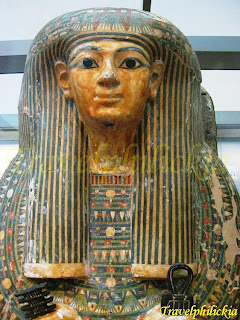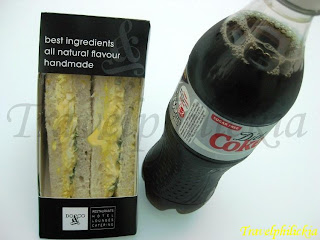Rushed to Neuchâtel train station immediately after work to meet my colleague there, and after which we took the train at 1735 hours to Geneva Airport. This was my first time to fly out of Switzerland to another country for leisure trip.
As it was early upon arrival at the airport, we decided to have our dinner first at a fast food restaurant before checking in our flight. Cost of living in Switzerland is definitely high as my simple meal cost CHF 13.50 while in Singapore the same meal cost only SGD 6.50. After the custom check, we waited patiently at the boarding gate. Was totally disappointed with EasyJet airline as it was delayed for one hour from the ETD 2130 hours to 2240 hours (left photo below). This had disrupted our schedule. Being a budget airline, EasyJet is well-known to delay their flights. However due to its competitive fare, many passengers still continue to take their flights.
Finally boarded the flight (right photo below), and I fell asleep soon after the flight took off as I was too tired from the work and long wait at the airport.


After arrived at Gatwick Airport, another surprise awaited us; we had to take a shuttle bus from the North Terminal to the South Terminal for Gatwick Express. The journey from North to South Terminal took about 15-mins. By the time we got on to the Gatwick Express, it was already 0020 hours. To add on to the unfortunate list; when we reached Victoria train station, all the London Underground services had stopped. We could only take a 24-hour bus to Paddington area. But before that we had to cross over the street from Victoria Train station to a convenient store. The reason is to get some mineral water and at the same time get our notes changed to smaller ones. As we are not familiar with Paddington area and it was already past mid-night, we alighted a few stops ahead and had to walk for about 20 minutes with our heavy luggage before reaching the hotel. After all the hassle, finally we checked-in to our hotel and had a good rest.
Day Two
After a satisfying breakfast at the hotel, we proceeded to the British Museum using the London Underground.
The British Museum
Known to be one of three great museums in Europe (and probably the whole world), The British Museum houses more than seven million objects illustrating the human culture from almost all the World Continents. The other two great museums are Louvre Museum in Paris and Vatican Museum in Rome.
Established in 1753, but it was only opened to the public in 1759. The museum quickly expands as a result of increasing British colonial territories. The entrance of the museum has the look of grand neo-classical style (left photo below), which was based on the design of the temple of Athena Polias at Priene. The pediment over the main entrance (right photo below) is decorated by sculptures by Sir Richard Westmacott depicting The Progress of Civilization, consisting of fifteen allegorical figures, installed in 1852.


The Reading Room of the museum was closed in 1997 for renovation where glass-roof was installed over the Great Court (photos below). This new area was re-opened in 2000.


The most popular section in the museum definitely is the department of Ancient Egypt and Sudan. This is where the world's largest and most comprehensive collection of Egyptian antiquities outside Cairo, Egypt. The museum has an impressive collection of 140 mummies and coffins, and photos below are just some of the relics exhibited:














The monumental sculptures located at the basement of the museum are not to be missed where many precious relics could be found.




As we decided to spend the whole afternoon, thus lunch had to be taken inside the museum. Bought a sandwich at £ 2.50 and a soft-drink at £ 1.90 (left photo below) at the Court Café (right photo below).


The department of Asia covers a wide varieties of exhibits, ranging from bronze vessels (left photo below), ceramics (right photo below) to paintings and calligraphies.


What caught my attention was this printed Buddhist script - diamond sutra (photos below) on loan from British Library. This was the earliest woodblock printing at AD 868, which was 600 years ahead of Gutenberg Bible printed in Germany.


The contemporary art was an interesting section in the museum. In one of the exhibited paintings, traditional Chinese ink paintings (photos below) was incorporated with elements of modernization. Strong environment protection messages can be felt from these paintings.


Another interesting piece of relic is the human skull-cup from Tibet (left photo below). The cup is filled with blood for symbolic offering to Tibetan deities. The calligraphic work (right photo below) by one of the earliest Chinese reformers, Kang Youwei, in 1914 was another unexpected display. In his running script, he wrote that his heart is at peace and felt no guilt or shame after the failure of "hundred days reform" in 1898.


The Parthenon Gallery (left photo below) is another not to miss exhibition where the Parthenon Marbles, also known as the Elgin Marbles, are displayed. Taken by Lord Elgin from the Greek Temple: Parthenon of Greece, the sculptures are part of the temple built during the period from 447 to 438 BC. These marble sculptures were removed from the temple during 1801 till 1812 and were sold to British Government in 1816.
The debate continues till today as to whether the Marbles should remain in the British Museum or be returned to Athens. But one thing for sure is these sculptures have become valuable objects for study in the classic Greek Arts, such as the Metope depicting a Centaur and a Lapith fighting (right photo below), Selene Horse (bottom left photo) and Statuary from the west pediment of the Parthenon (bottom right photo).




Collection from the department of Middle East is another gem of the museum. The pair of Human Headed Winged Lions and Reliefs (left photo below) from Nimrud could date back from 883-859 BC. The colossal Statue of a Lion (right photo below) also has the same period.


Perhaps the most famous piece of collection is this Rosetta Stone (left photo below). It was part of an Ancient Egyptian granodiorite stele inscribed with a decree issued at Memphis, Egypt in 196 BC in three scripts: the upper text is Ancient Egyptian hieroglyphs, the middle portion demotic script, and the lowest Ancient Greek. Because of essentially the same text in all three scripts, it provided the key to the modern understanding of Egyptian hieroglyphs.
The double-headed serpent (right photo below) of ancient Aztec is best represented from the collection of America. Turquoise mosaics were applied on a carved wooden base, with red and white shells used for the mouths.


We left the museum at about 5 pm.
The nearest underground to the museum is either Tottenham Court Road or Holborn station and walk for about 5 to 10-mins. Opening hour from 1000 to 1730 hours (daily). Admission is free.
Leicester Square
While walking towards Chinatown, we noticed that there were quite a number of musical theatres (photos below) around Leicester Square area, showing Priscilla and the Muppet Show.


Chinatown
Chinatown of London was first formed in 18th century where Chinese immigrants settled in the docks at Limehouse. Soon Chinese community formed and occupying the area in and around Gerrard Street, City of Westminster. Now a number of Chinese restaurants, bakeries, supermarkets, souvenir shops, and other Chinese-run businesses make up of London Chinatown.
Chinatown is not complete without a Chinese Arch, which is a common structure in most Chinatown around the world. This Chinese Arch (left photo below) is unique in design with a contemporary steel-look and can be easily recognized with the plaque stating "伦敦华埠". Probably it has been few months since my stay in Neuchâtel; I was rather excited to see many of the familiar snacks sold in one of the provision shops (right photo below). Though cost slightly more than in Singapore, I still bought some snacks back to Switzerland.


The nearest underground to Chinatown is to alight at Leichester Square station and walk towards Gerrard Street for about 5-mins.
Dinner at Malaysia Kopi Tiam
Saw this restaurant (left photo below) near the Chinatown and we immediately decided that we will have dinner there. Really missed Singaporean food badly, thus we shared a plate of Sambal fried Carrot Cake at £ 3.50 (right photo below).


For myself, ordered a Penang Char Kway Teow at £ 5.50 (left photo below) and an Ice Kacang at £ 3 (right photo below). Although slightly pricey, the food was good and authentic; definitely had satisfied my craving for Singaporean local food.


The restaurant is located at 67 Charing Cross Road, just 5-mins walk up the Charing Cross road from Leicester Square Station.
Harrods Departmental Store
After dinner, we took the underground to Harrods Departmental Store (photos below). This departmental store can be reached by Knightsbridge underground station.


This is a high-end department store where there are many signature products are sold there. The more popular products are the Harrods Teddy bears (left photo below) and their signature Tote-bags (right photo below). Note: these two photos were taken from Harrods website.


Hyde Park Corner
The park is located at the South-east corner of Hyde Park, where many monuments are located. The Wellington Arch (left photo below), also known as Constitution Arch, was planned in 1825 by King George IV to commemorate Britain's victories in the Napoleonic Wars and designed to be the grand entrance to Buckingham Palace. The wellington statue, originally at the top of the arch, was replaced by a huge bronze quadriga in 1912. The quadriga statue is the largest bronze sculpture in Europe, which depicts the Goddess of Peace descending on a chariot of war pulled by four horses.
The arch has a viewing platform that offers amazing views over London and has a permanent exhibition on the arch's rich history. It cost £ 3.30 to enter the arch, and opening hours from Wednesdays to Sundays 1000 to 1700 hours (Apr till Oct) or 1000 to 1600 hours (Nov to Mar).
A smaller statue of General Wellington (right photo below) can be found near to the arch.


Hard Rock Café London
The Hard Rock Café can be reached by underground and alighting at Hyde Park Corner Station, then walked for 5-mins towards Old Park Lane. This hard rock café has been standing on 150 Old Park Lane since 14 June 1971, and this is the one that started the whole Hard Rock Café chain. It is still as charming and authentic now as it was 40 years ago.
The Hard Rock Café restaurant (left photo below) and its souvenir shop, better known as the Rock Shop (right photo below), are in two different buildings separated by a lane.


Probably we were tired from last night's hassle and the packed itinerary of the day, we then went back to the hotel and had an early rest.
 Posts RSS
Posts RSS


